There are nine essential amino acids that we require from our diet.
Since the human body cannot make these amino acids, we need to derive them from the foods we eat.
In this article, we examine what the nine essential amino acids are, their functions, how much we require, and the best food sources.
The data for recommended intake amounts are sourced from the World Health Organization’s expert consultation report entitled ‘Protein and Amino Acid Requirements in Human Nutrition’.
What Are Essential Amino Acids?

We can often hear amino acids referred to as the ‘building blocks’ of protein.
Amino acids are organic compounds that contain the elements carbon, hydrogen, oxygen, nitrogen, and sometimes sulfur (1).
There are twenty primary amino acids, but not all of them are essential. We can classify these amino acids in the following categories;
- Essential amino acids: the human body cannot synthesize these amino acids, so we need to obtain them from our diet. There are nine essential amino acids (2).
- Conditionally essential amino acids: generally speaking, the human body can produce these amino acids when in good health. However, they are ‘çonditionally essential’ because the body cannot synthesize them in certain medical conditions or in times of stress (3). Arginine is an example of a conditionally essential amino acid (for more information refer to: foods high in arginine).
- Nonessential amino acids: the body can produce these amino acids, so we do not have a dietary requirement for them. However, this does not mean they hold no nutritional value.
The nine essential amino acids are as follows;
- Histidine
- Isoleucine
- Leucine
- Lysine
- Methionine
- Phenylalanine
- Threonine
- Tryptophan
- Valine
What Do They Do?
Essential amino acids play a multitude of roles within the body.
Among these varied roles, amino acids support gene expression, immune response, protein formation, digestion, tissue repair, and enzyme production (4).
We will look into the functions of each amino acid in more detail later on.
Where Can We Find Them?
Generally speaking, the best sources of essential amino acids include:
- Dairy
- Eggs
- Meat
- Poultry
- Seafood
- Soy
These foods contain adequate amounts of all nine essential amino acids. For this reason, we can refer to them as ‘complete proteins’ (5).
Although plant foods are still a good source of protein, the amino acids are not quite as bioavailable as proteins from animal foods.
Histidine
Histidine has a wide variety of roles. Firstly, it is a precursor to histamine, which is a compound involved in modulating immune response (6).
The various functions of histidine include (7);
- Blood cell formation
- Protecting nerve cells
- Growth and repair of tissues
- Precursor for the synthesis of histamine
Requirement
The current recommendations advise that healthy adults should get at least 10 mg of histidine per kilogram of body weight per day (8).
Best Food Sources
The table below shows the foods with the highest concentration of histidine per 100 grams (9);
| Animal Foods | Histidine Content Per 100 Grams |
|---|---|
| Parmesan cheese | 1.75 g |
| Beef (lean, cooked) | 1.41 g |
| Bacon (cooked) | 1.39 g |
| Romano cheese | 1.23 g |
| Chicken breast (cooked) | 1.20 g |
| Plant Foods | Histidine Content Per 100 Grams |
| Soybeans (roasted) | 1.07 g |
| Hemp seed | 0.97 g |
| Butternuts | 0.81 g |
| Pumpkin seeds | 0.78 g |
| Peanuts (roasted) | 0.71 g |
Isoleucine
Isoleucine is an essential branched-chain amino acid (BCAA), and it plays various roles in the human body.
The functions of leucine include (10).
- Helps with blood sugar regulation
- Important for optimal energy levels
- Supports immune response
- Supports wound healing processes
Requirement
According to the current guidelines, adults should aim for 20 mg of isoleucine per kilogram of body weight per day (8).
Best Food Sources
The table below shows the foods with the highest concentration of histidine per 100 grams (11);
| Animal Foods | Isoleucine Content Per 100 Grams |
|---|---|
| Parmesan cheese | 1.89 g |
| Chicken breast (cooked) | 1.76 g |
| Beef (lean, cooked) | 1.73 g |
| Lamb (shoulder, cooked) | 1.72 g |
| Romano cheese | 1.69 g |
| Plant Foods | Isoleucine Content Per 100 Grams |
| Soybeans (roasted) | 1.92 g |
| Hemp seed | 1.29 g |
| Pumpkin seeds | 1.28 g |
| Sunflower seeds | 1.14 g |
| Peanuts (roasted) | 0.98 g |
Leucine
Leucine is another branched-chain amino acid (BCAA), and among its various functions, leucine contributes to (12);
- Blood sugar regulation
- Growth and repair of tissues
- Production of growth hormone
- Wound healing
Requirement
The current essential amino acid recommendations suggest that an adult requires 39 mg per kg of body weight per day (8).
Best Food Sources
The following table lists some of the best dietary sources of leucine (13);
| Animal Foods | Leucine Content Per 100 Grams |
|---|---|
| Whelk (cooked) | 3.81 g |
| Parmesan cheese | 3.45 g |
| Beef (lean, cooked) | 3.22 g |
| Gruyere cheese | 3.10 g |
| Ribeye steak (cooked, lean) | 2.78 g |
| Plant Foods | Leucine Content Per 100 Grams |
| Soybeans (roasted) | 3.22 g |
| Pumpkin seeds | 2.42 g |
| Hemp seeds | 2.16 g |
| Walnuts (black) | 1.68 g |
| Split green peas | 1.68 g |
For a complete guide to leucine and why it is important, see this article here.
Lysine
Lysine is often the limiting essential amino acid in protein foods.
When protein synthesis cannot continue due to the unavailability (depletion) of one amino acid, we can refer to this as the ‘limiting amino acid’ (14).
Among its different functions, lysine supports (15);
- Growth and tissue repair
- Immune function
- Production of carnitine and collagen
- Wound healing
Requirement
Healthy adults require 30 mg of lysine per kilogram of body weight per day (8).
Best Food Sources
Here are some foods with the highest lycine concentrations (16);
| Animal Foods | Lysine Content Per 100 Grams |
|---|---|
| Beef (lean, cooked) | 3.61 g |
| Parmesan cheese | 3.31 g |
| Lamb (lean, cooked) | 3.14 g |
| Turkey meat (cooked) | 3.11 g |
| Chicken breast (cooked) | 3.08 g |
| Plant Foods | Lysine Content Per 100 Grams |
| Pumpkin seeds | 1.39 g |
| Hemp seeds | 1.28 g |
| Pistachio nuts | 1.19 g |
| Natto | 1.15 g |
| Soybeans | 1.11 g |
Methionine
Methionine is a sulfur-containing essential amino acid that has a vast array of roles within the body.
Among these roles, methionine assists in the following processes (17).
- Maintaining healthy hair and skin
- Proper absorption of the minerals selenium and zinc
- Protecting cells against damage
- Regulating liver fat
- Removing heavy metals from the body
Requirement
Adults require 15 mg of methionine and cysteine per kilogram of body weight each day (8).
Best Food Sources
Lean meats and fish tend to be the best sources of methionine. Here are some foods with high concentrations (18);
| Animal Foods | Methionine Content Per 100 Grams |
|---|---|
| Whelk | 1.61 g |
| Beef (lean, cooked) | 1.14 g |
| Lamb (lean, cooked) | 1.09 g |
| Parmesan cheese | 0.96 g |
| Bacon (Pan-fried) | 0.94 g |
| Plant Foods | Methionine Content Per 100 Grams |
| Brazil nuts | 1.12 g |
| Hemp seeds | 0.93 g |
| Sesame seeds | 0.88 g |
| Butternuts | 0.61 g |
| Pumpkin seeds | 0.60 g |
Phenylalanine
Phenylalanine is an essential amino acid that is a precursor for dopamine, epinephrine, norepinephrine, and tyramine.
Additionally, phenylalanine plays a vital role in producing other amino acids (19).
Requirement
Adults require 25 mg of phenylalanine per kilogram of body weight per day (8).
Best Food Sources
Here are some of the best dietary sources of phenylalanine (20);
| Animal Foods | Phenylalanine Content Per 100 Grams |
|---|---|
| Parmesan cheese | 1.92 g |
| Gruyere cheese | 1.74 g |
| Whelk | 1.51 g |
| Beef liver (cooked) | 1.51 g |
| Beef (lean, cooked) | 1.48 g |
| Plant Foods | Phenylalanine Content Per 100 Grams |
| Soybeans (roasted) | 1.84 g |
| Pumpkin seeds | 1.73 g |
| Peanuts | 1.45 g |
| Hemp seed | 1.45 g |
| Peanut butter | 1.20 g |
Threonine
Threonine is an essential amino acid that has a key role in the nervous system.
Additionally, threonine’s may have some potential benefits. Research shows the amino acid (21);
- Helps to regulate liver fat
- May help to treat anxiety and other mental health symptoms
Requirement
According to present estimates, healthy adults need 15 mg of threonine per kilogram of body weight per day (8).
Best Food Sources
Some of the best dietary sources of threonine include the following options (22);
| Animal Foods | Threonine Content Per 100 Grams |
|---|---|
| Whelk | 2.14 g |
| Pork skin | 1.82 g |
| Beef (lean, cooked) | 1.74 g |
| Lamb (lean, cooked) | 1.59 g |
| Bacon (pan-fried) | 1.50 g |
| Plant Foods | Threonine Content Per 100 Grams |
| Soybeans (roasted) | 1.53 g |
| Hemp seeds | 1.27 g |
| Pumpkin seeds | 1.00 g |
| Peanuts | 0.96 g |
| Butternuts | 0.94 g |
Tryptophan
Although it is an essential amino acid, tryptophan occurs in lower concentrations than other amino acids.
However, it has several important functions and potential benefits (23);
- Important for growth and repair
- Precursor for serotonin synthesis
- Through its role in serotonin production, it can help with improving mood and sleep
Requirement
Per kilogram of body weight per day, healthy adults require only 4 mg of tryptophan (8).
Best Food Sources
Here are the best dietary options for tryptophan. As shown in the table, the concentrations of tryptophan in food are relatively low (24);
| Animal Foods | Tryptophan Content Per 100 Grams |
|---|---|
| Pork pancreas | 0.62 g |
| Whelk | 0.62 g |
| Mozzarella cheese | 0.55 g |
| Pork (cooked) | 0.46 g |
| Lamb (lean, cooked) | 0.41 g |
| Plant Foods | Tryptophan Content Per 100 Grams |
| Pumpkin seeds | 0.58 g |
| Soybeans (roasted) | 0.53 g |
| Chia seeds | 0.44 g |
| Sesame butter | 0.40 g |
| Sesame seeds | 0.39 g |
Valine
Valine is the third of the three essential branched-chain amino acids alongside leucine and isoleucine.
The various functions of valine include (25);
- Supporting muscular growth and tissue repair
- Important for the nervous system and cognitive health
- May help with relaxation and mental calmness
Requirement
According to the recommendations, healthy adults require 26 mg of valine per kilogram of body weight each day (8).
Best Food Sources
Some valine-rich foods include the following options (26);
| Animal Foods | Valine Content Per 100 Grams |
|---|---|
| Parmesan cheese | 2.45 g |
| Pork skins | 2.42 g |
| Whelk | 2.08 g |
| Pork (cooked) | 1.97 g |
| Lamb (lean, cooked) | 1.92 g |
| Plant Foods | Valine Content Per 100 Grams |
| Soybeans (roasted) | 1.98 g |
| Pumpkin seeds | 1.58 g |
| Butternuts | 1.54 g |
| Pumpkin seeds | 1.49 g |
| Sunflower seeds | 1.31 g |
Summary of Essential Amino Acid Requirements
The following table provides an at-a-glance overview of the essential amino acid requirements for healthy adults.
The data is the result of joint consultation between the World Health Organization, Food and Agriculture Organization, and United Nations University (8).
| Amino Acid | Daily Requirement Estimate (mg/kg per day) |
|---|---|
| Histidine | 10 mg |
| Isoleucine | 20 mg |
| Leucine | 39 mg |
| Lysine | 30 mg |
| Methionine (+ cysteine) | 15 mg |
| Phenylalanine | 25 mg |
| Threonine | 15 mg |
| Tryptophan | 4 mg |
| Valine | 26 mg |
Essential Amino Acid Requirements In Infants
There are some differences between the estimated essential amino acid requirements for adults and infants. These differences depend upon the specific stage of life and growth phase.
Therefore, the table below shows the published estimated requirements for infants (8).
| Amino Acid | Age Group (In Years) | Daily Requirement Estimate (mg/kg per day) |
|---|---|---|
| Histidine | 0.5 | 22 mg |
| 1-2 | 15 mg | |
| 3-10 | 12 mg | |
| 11-14 | 12 mg | |
| 15-18 | 11 mg | |
| Isoleucine | 0.5 | 36 mg |
| 1-2 | 27 mg | |
| 3-10 | 23 mg | |
| 11-14 | 22 mg | |
| 15-18 | 21 mg | |
| Leucine | 0.5 | 73 mg |
| 1-2 | 54 mg | |
| 3-10 | 44 mg | |
| 11-14 | 44 mg | |
| 15-18 | 42 mg | |
| Lysine | 0.5 | 64 mg |
| 1-2 | 45 mg | |
| 3-10 | 35 mg | |
| 11-14 | 35 mg | |
| 15-18 | 33 mg | |
| Methionine | 0.5 | 31 mg |
| 1-2 | 22 mg | |
| 3-10 | 18 mg | |
| 11-14 | 17 mg | |
| 15-18 | 15 mg | |
| Phenylalanine | 0.5 | 59 mg |
| 1-2 | 40 mg | |
| 3-10 | 30 mg | |
| 11-14 | 30 mg | |
| 15-18 | 28 mg | |
| Threonine | 0.5 | 34 mg |
| 1-2 | 23 mg | |
| 3-10 | 18 mg | |
| 11-14 | 18 mg | |
| 15-18 | 17 mg | |
| Tryptophan | 0.5 | 9.5 mg |
| 1-2 | 6.4 mg | |
| 3-10 | 4.8 mg | |
| 11-14 | 4.8 mg | |
| 15-18 | 4.5 mg | |
| Valine | 0.5 | 49 mg |
| 1-2 | 36 mg | |
| 3-10 | 29 mg | |
| 11-14 | 29 mg | |
| 15-18 | 28 mg |
Essential Amino Acid Deficiency
Should there be a deficiency in any of the essential amino acids, this will affect protein synthesis since all nine essential amino acids are required.
Deficiency in an essential amino acid may also lead to further deficiency symptoms dependent upon the particular amino acid.
Final Thoughts
Ensuring sufficient intake of essential amino acids is vital for our overall health.
However, we don’t need to overthink each specific essential amino acid.
In other words; consuming enough high-quality protein foods should provide sufficient amounts of each amino acid.
As previously mentioned, animal foods like dairy, meat, seafood, and eggs are all high-quality protein sources.
Among plant-based foods, soy is the best provider of all essential amino acids. This includes both soybeans themselves and soy-based products, such as tofu, fermented soy curd, and tempeh.


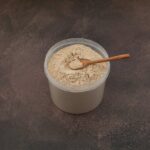
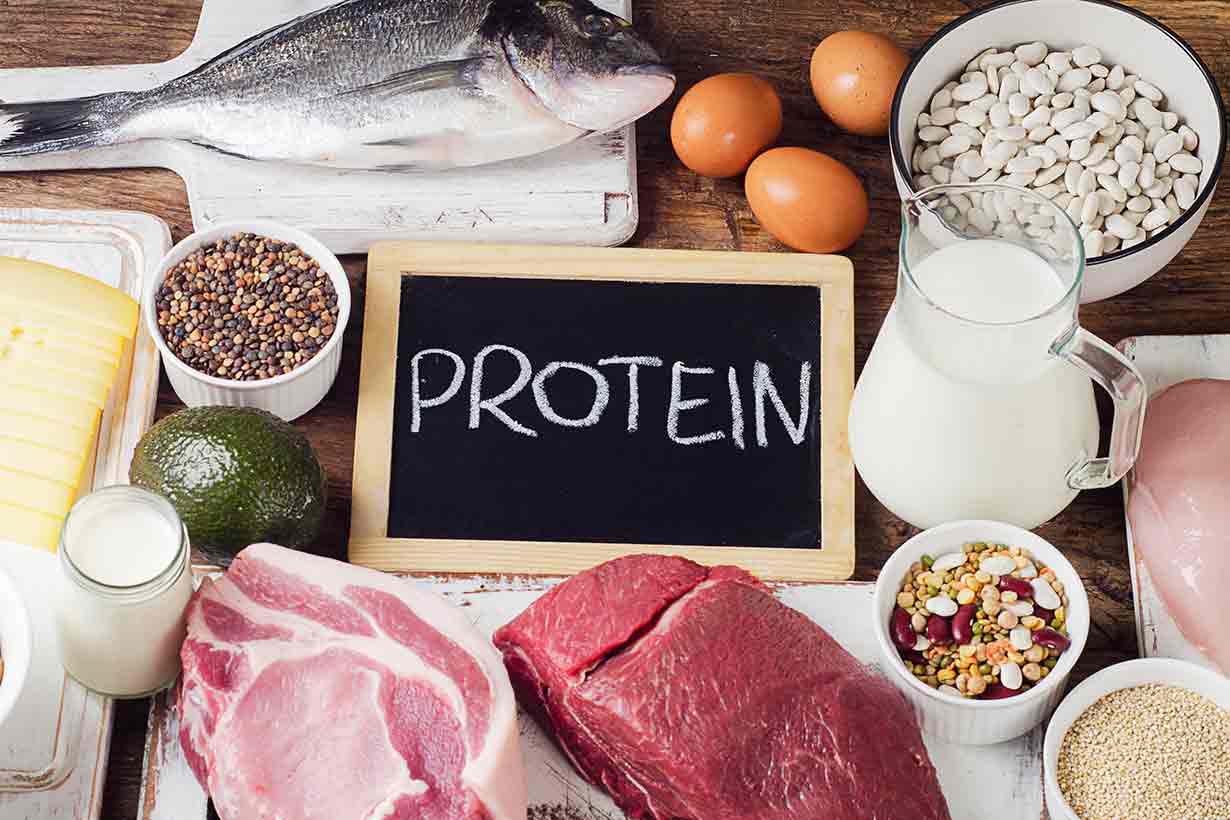
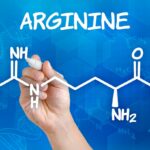
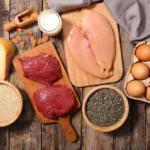

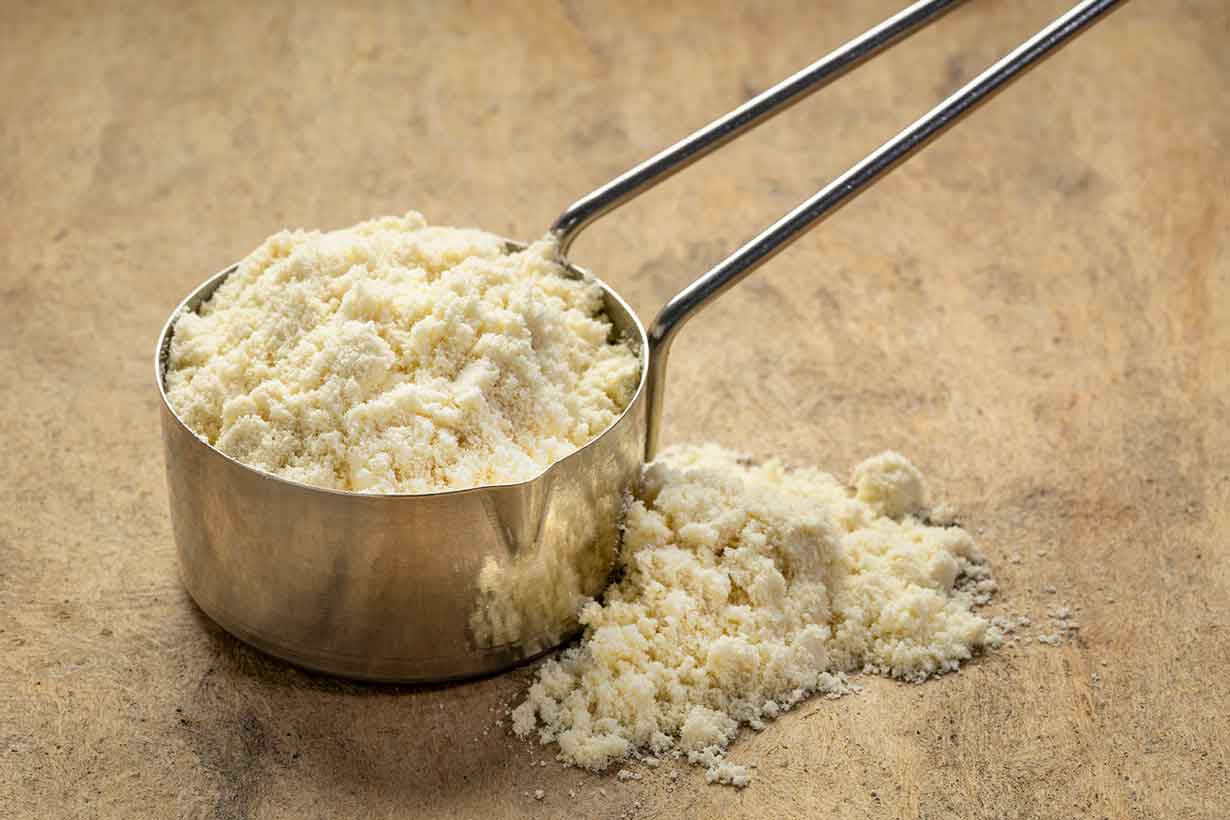

This is most interesting. What I would like to see in your graphs, is a caloric comparison also. Thanks.
If you looked at this on a per calorie basis, the animal-based proteins would be the best sources of amino acids. Nuts/seeds/beans are all quite high in calories per 100 grams.
Yes I agree – excellent post Michael – thank you as always for your balanced yet detailed analysis.
Bev, Dr Ted Naiman – http://www.burnfatnotsugar.com/ – has a great little tool that one can use to assess the Protein to Energy ratio of different foods and you can find it over here – http://www.ptoer.com/
Mr Joseph,
Thank you so much for this incredibly detailed information.
As always with great appreciation!
Thank you – glad it was informative for you!